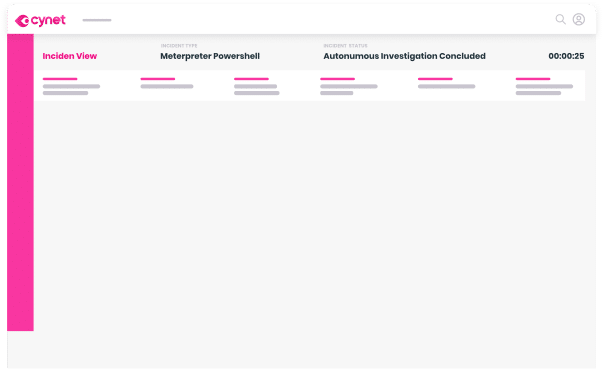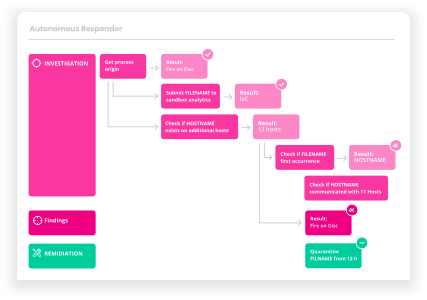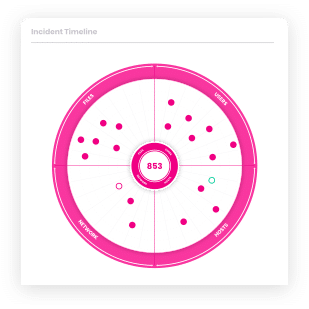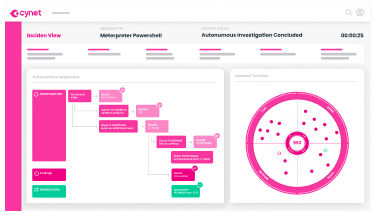See Cynet 360 AutoXDR™ in Action
Prefer a one-on-one demo? Click here
By clicking next I consent to the use of my personal data by Cynet in accordance with Cynet's Privacy Policy and by its partners
Search results for:
Advanced Persistent Threat (APT) are compound network attacks that utilize multiple stages and different attack techniques. APTs are not attacks conceived of or implemented on the spur-of-the-moment. Rather, attackers deliberately plan out their attack strategies against specific targets and carry out the attack over a prolonged time period.
In this article, we’ll provide insight into the concept of an APT and outline five APT attack stages, including initial access, and first penetration and malware deployment. We’ll also provide examples of APTs, such as GhostNet and Stuxnet. Read on, to learn about APT detection and protection measures.
This is part of an extensive series of guides about hacking.
An Advanced Persistent Threat (APT) is an organized cyberattack by a group of skilled, sophisticated threat actors. APTs are not “hit and run” attacks. Attackers plan their campaign carefully against strategic targets, and carry it out over a prolonged period of time.
APTs are compound attacks involving multiple stages and a variety of attack techniques. Many common attack vectors, were initially introduced as parts of an APT campaign with zero-day exploits and malware, customized credential theft and lateral movement tools as the most prominent examples. APT campaigns tend to involve multiple attack patterns and multiple access points.
APT attacker goals, and consequences faced by organizations, include:
Learn more about the Cynet 360 AutoXDR™ security platform.
There are a number of sure signs that point to the existence of an APT attack. These signs include:
APT attacks have multiple stages, from initial access by attackers to ultimate exfiltration of the data and follow-on attacks:
APT groups start their campaign by gaining access to a network via one of three attack surfaces: web-based systems, networks, or human users. They typically achieve access via malicious uploads, searching for and exploiting application vulnerabilities, gaps in security tools, and most commonly, spear phishing targeting employees with privileged accounts. The goal is to infect the target with malicious software.
After they gain access, attackers compromise the penetrated system by install a backdoor shell, a trojan masked as legitimate software, or other malware that allows them network access and remote control of the penetrated system. An important milestone is to establish an outbound connection to their Command and Control system. APTs may use advanced malware techniques such as encryption, obfuscation or code rewriting to hide their activity.
Attackers use the first penetration to gather more information about the target network. They may use brute force attacks, or exploit other vulnerabilities they discover inside the network, to gain deeper access and control additional, more sensitive systems. Attackers install additional backdoors and create tunnels, allowing them to perform lateral movement across the network and move data at will.
Once they have expanded their presence, attackers identify the data or assets they are after, and transfer it to a secure location inside the network, typically encrypted and compressed to prepare for exfiltration. This stage can take time, as attackers continue to compromise more sensitive systems and transfer their data to secure storage.
Finally, attackers prepare to transfer the data outside the system. They will often conduct a “white noise attack”, such as a Distributed Denial of Service (DDoS) attack, to distract security teams while they transfer the data outside the network perimeter. Afterwards they will take steps to remove forensic evidence of the data transfer.
Depending on the goal of the attack, at this point the APT group may create massive damage, debilitating the organization or taking over critical assets such as websites or data centers.
If the APT attack involved a silent data exfiltration which was not detected, attackers will remain inside the network and wait for additional attack opportunities. Over time they may collect additional sensitive data and repeat the process. They will also aim to create backdoors that are difficult to detect, so even if they are caught, they can regain access to the system in the future.
Learn more about the Cynet 360 AutoXDR™ security platform.
Here are a few examples of APT malware-based attacks and known APT groups:
Learn more about the Cynet 360 AutoXDR™ security platform.
APT is a multi-faceted attack, and defenses must include multiple security tools and techniques. These include:
Learn more about the Cynet 360 AutoXDR™ security platform.
Cynet 360 is a holistic security platform that can provide multi-faceted protection against Advanced Persistent Threats. Cynet correlates data from endpoints, network analytics and behavioral analytics to present findings with near-zero false positives.
Cynet monitors endpoints memory to identify behavioral patterns that are readily exploited, such as unusual process handle request. These behavioral patterns lead to the vast majority of exploits, whether new or known. Cynet is able to provide effective protection against Advanced Persistent Threats and more, by identifying such patterns.
Cynet employs multi-layered malware protection, including sandboxing, process behavior monitoring, and ML-based static analysis. Cynet also offers fuzzy hashing and threat intelligence. This makes sure that even if an Advanced Persistent Threat establishes a connection with the attacker, and downloads additional malware, Cynet will stop this malware from running, thus preventing any harm from occurring.
Cynet continuously monitors user behavior, generates a real-time behavioral baseline, and provides alerts when behavior deviation is identified. This deviation in behavior may indicate a compromised user account. Additionally, Cynet provides the ability to define user activity policies, triggering an alert in case of violation.
Cynet supports the use of decoy tokens – data files, passwords, network shares, RDP and others – planted on assets within the protected environment. APT actors are highly skilled and therefore might evade detection. Cynet’s decoys lure such attackers, prompting them to reach out and reveal their presence.
Cynet uses an adversary-centric methodology to pinpoint threats throughout the attack chain. Cynet thinks like an adversary, identifying indicators and behaviors across endpoints, users, files, and networks. They supply a holistic account of the attack process, regardless of where the attack may try to penetrate.
Cynet uses a powerful correlation engine and provides its attack findings free from excessive noise and with near-zero false positives. This makes the response for security teams easier so they can attend to pressing incidents.
Choose from manual or automatic remediation. This way, your security teams can have a highly effective yet straight-forward way to disrupt, detect, and respond to advanced threats before they have the chance to do damage.
Learn more about the Cynet 360 AutoXDR™ security platform.
How and Why You Need to Protect Your Business Against APT Malware
APT malware is designed to execute malicious functions on a victim’s computer for a prolonged period of time. Rather than damaging a network or computer, APT malware seeks to continually steal an organization’s data over a lengthy period of time.
Protecting your business against APT malware is critical. Advanced persistent threats in the form of malware can be especially damaging to your business. While it’s important to have a firewall and other basic cybersecurity protocols in place, you need to take specific steps to protect against APT malware.
Read more: How and Why You Need to Protect Your Business Against APT Malware
APT Security: Warning Signs and 6 Ways to Secure Your Network
An advanced persistent threat (APT) is a systematic, sophisticated cyber attack. It is usually orchestrated by a group of hackers and runs for a long period of time. An APT attack is designed to achieve a specific objective such as sabotage, corporate espionage, theft of intellectual property or exfiltration of personal financial data.
Understand how Advanced Persistent Threats (APTs) operate, how to detect that APT is lurking on your network, and get 6 APT security best practices.
Read more: APT Security: Warning Signs and 6 Ways to Secure Your Network
Together with our content partners, we have authored in-depth guides on several other topics that can also be useful as you explore the world of hacking.
Authored by HackerOne
Authored by HackerOne
Authored by Bright Security



Let’s get started
Ready to extend visibility, threat detection and response?

Prefer a one-on-one demo? Click here
By clicking next I consent to the use of my personal data by Cynet in accordance with Cynet's Privacy Policy and by its partners